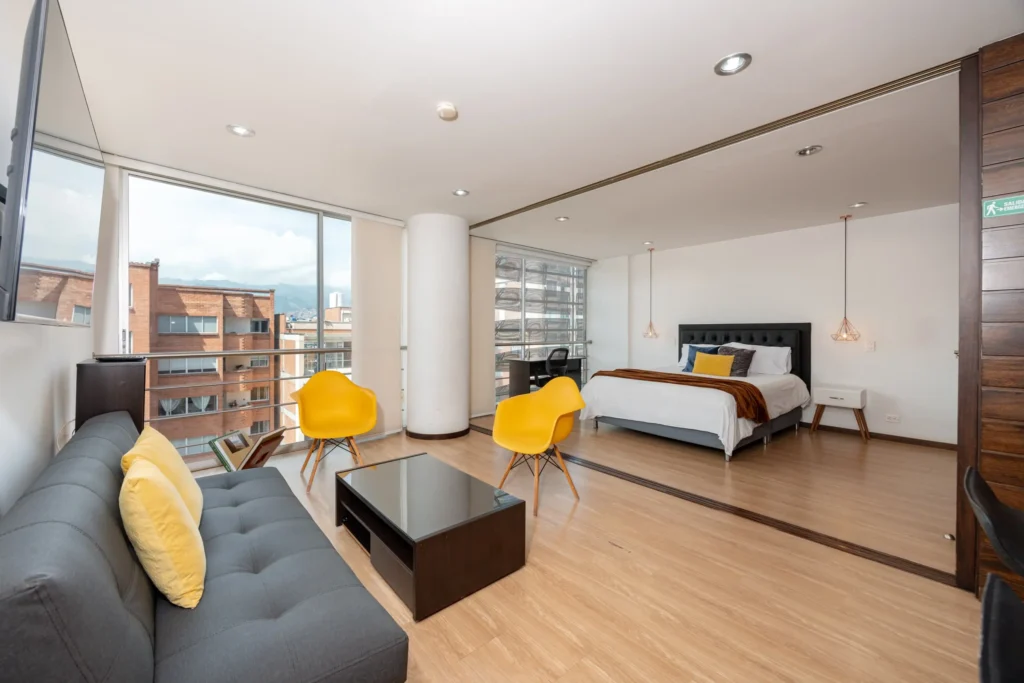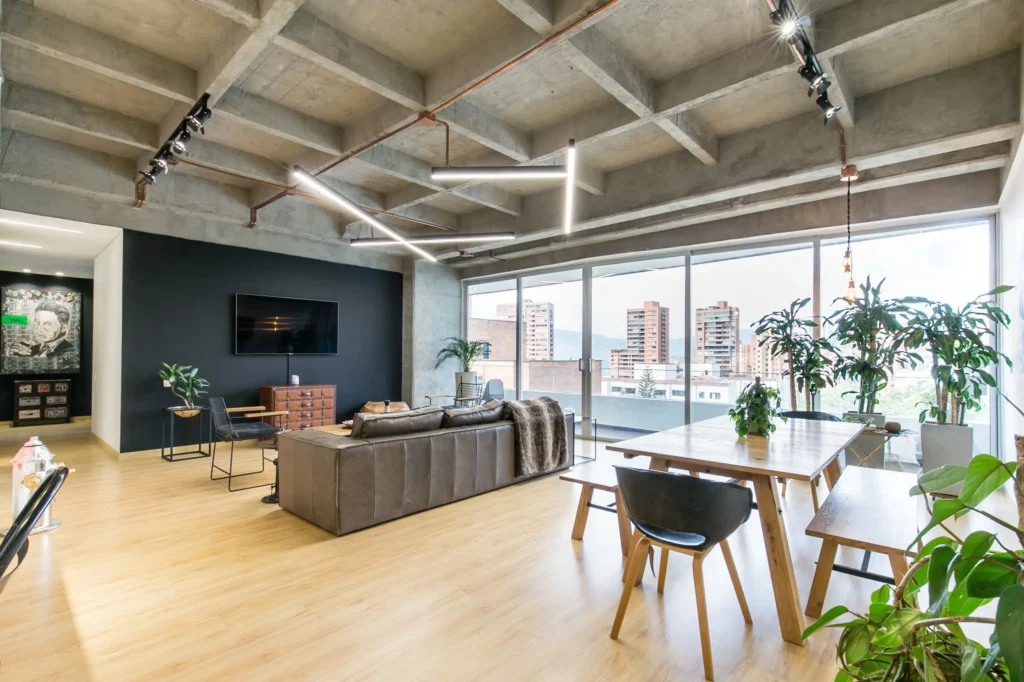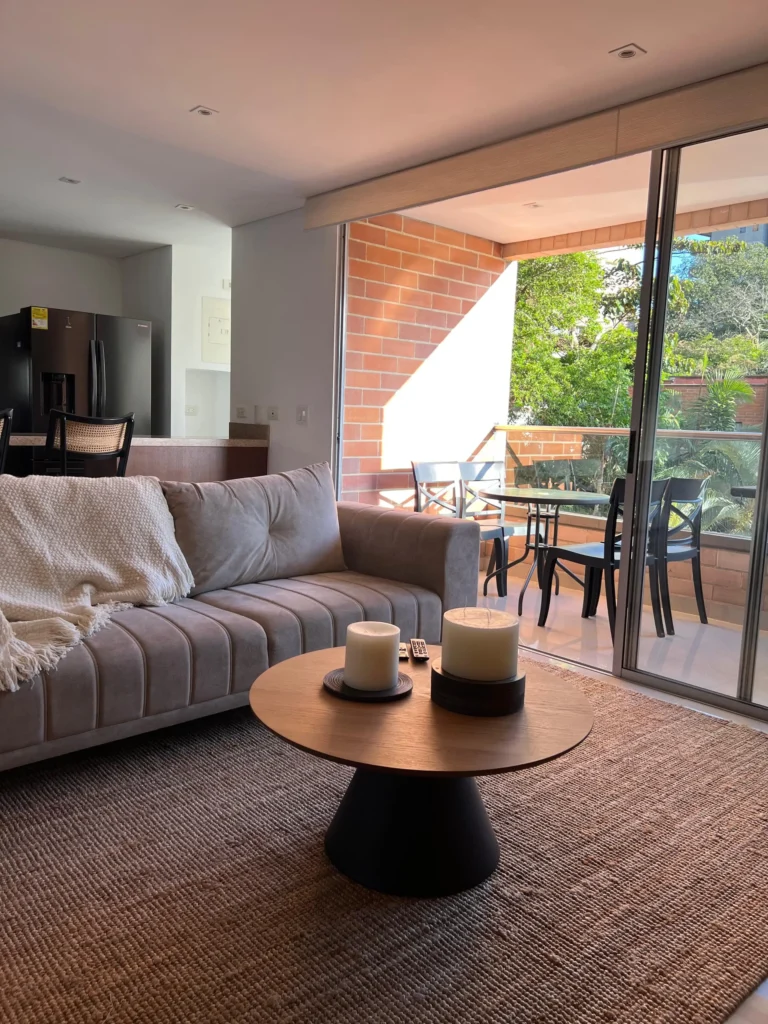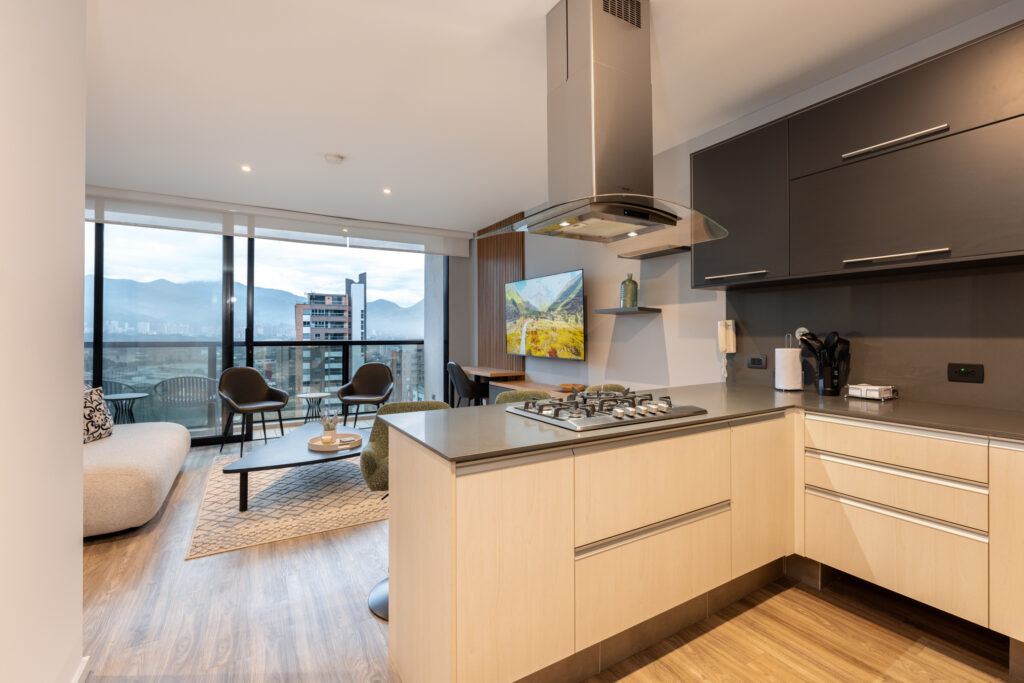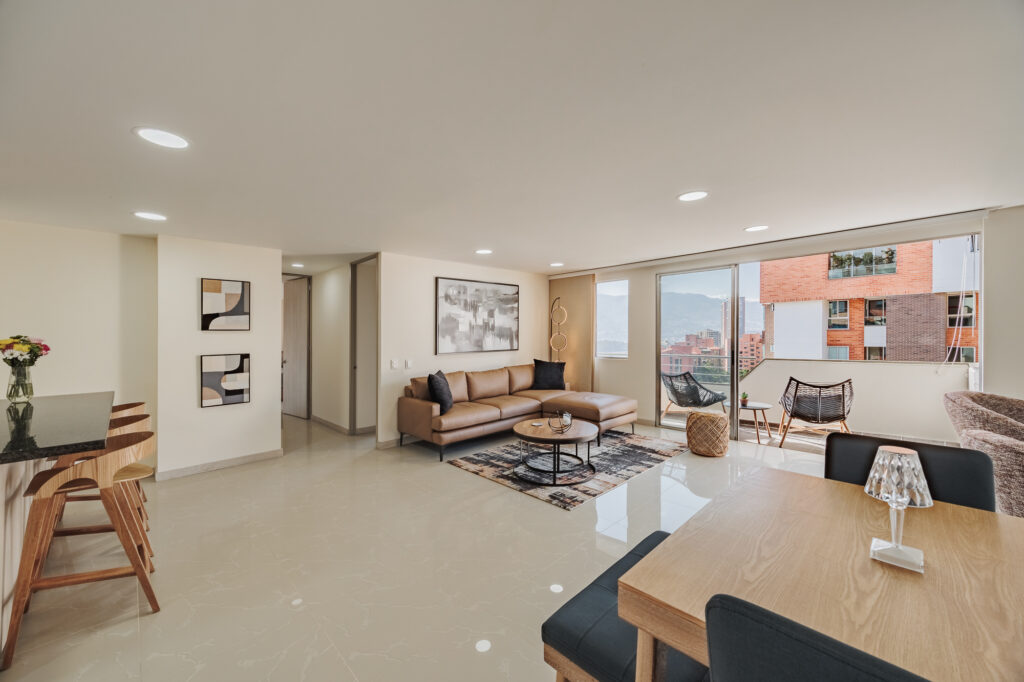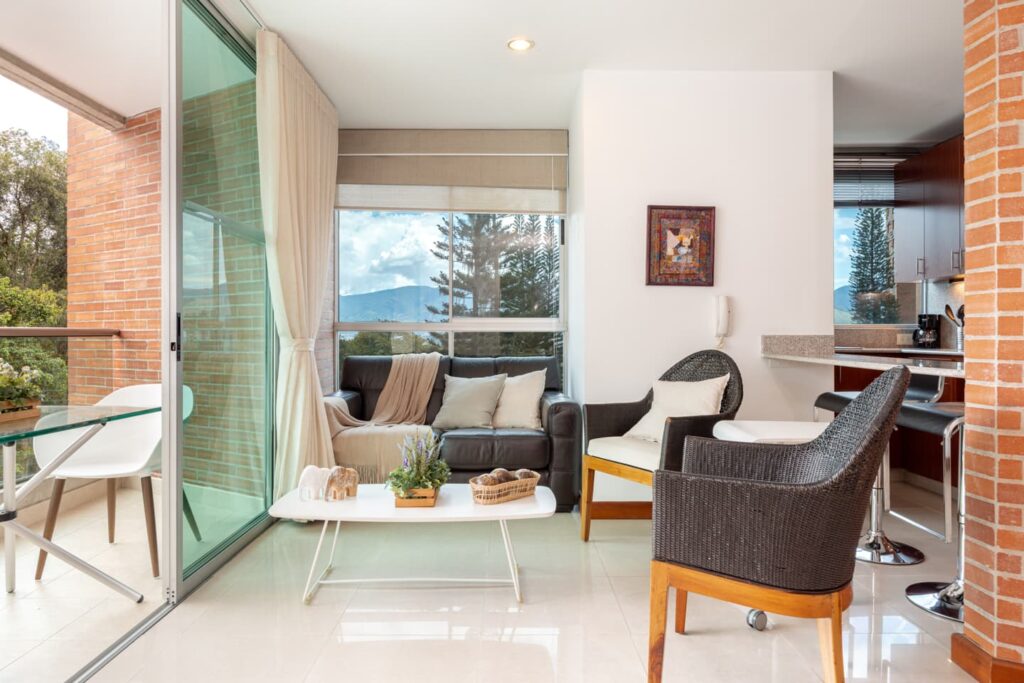TLDR? La Virgen de Oro is a sustainable coffee producer just a little way outside Medellin.
Coffee tours abound in Antioquia. I’ve gone on quite a few myself. And frankly, none match the experience of La Virgen de Oro in Támesis.
From finding some of the rarest birds in Colombia to drinking coffee above the clouds, La Virgen de Oro is a sustainable local coffee producer that rejects monoculture and produces delicious coffee in a stunning location.
Here’s how you can enjoy this quintessential Medellín ecotourism experience for yourself.
My Virgen de Oro Experience
Everyone’s Virgen de Oro Experience is unique, but to give you an idea of what to expect, I’ll walk you through my personal time at the finca.
Sebastián from La Virgen de Oro came to pick us up from our hotel in downtown Támesis at seven o’clock with a friendly smile and enthusiastic energy.
From there, we walked through town in the cool morning sun to the Jardin Botanico.
Birdwatching in el Jardín Botánico
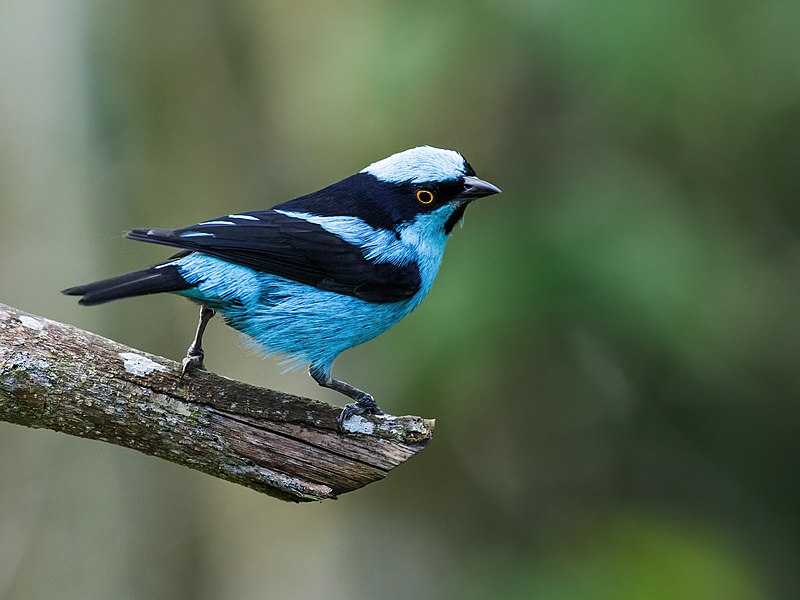
Because La Virgen de Oro cultivates its coffee in the nature reserves on the side of the mountain above Támesis, you have to hike through the botanical garden to get there.
This is a bonus since Sebastián apparently knows the genus and species names of every bird—not to mention butterfly and flower—in Colombia.
Among others, you can see the cock-of-the-rock and the turquoise dacnis, a rare but beautiful bird that attracts birdwatchers and scientists from all over the world.
It lives in just a few isolated populations around Colombia, one of which is confined to the Támesis botanical garden.
An Explanation of Sustainable Coffee Cultivation
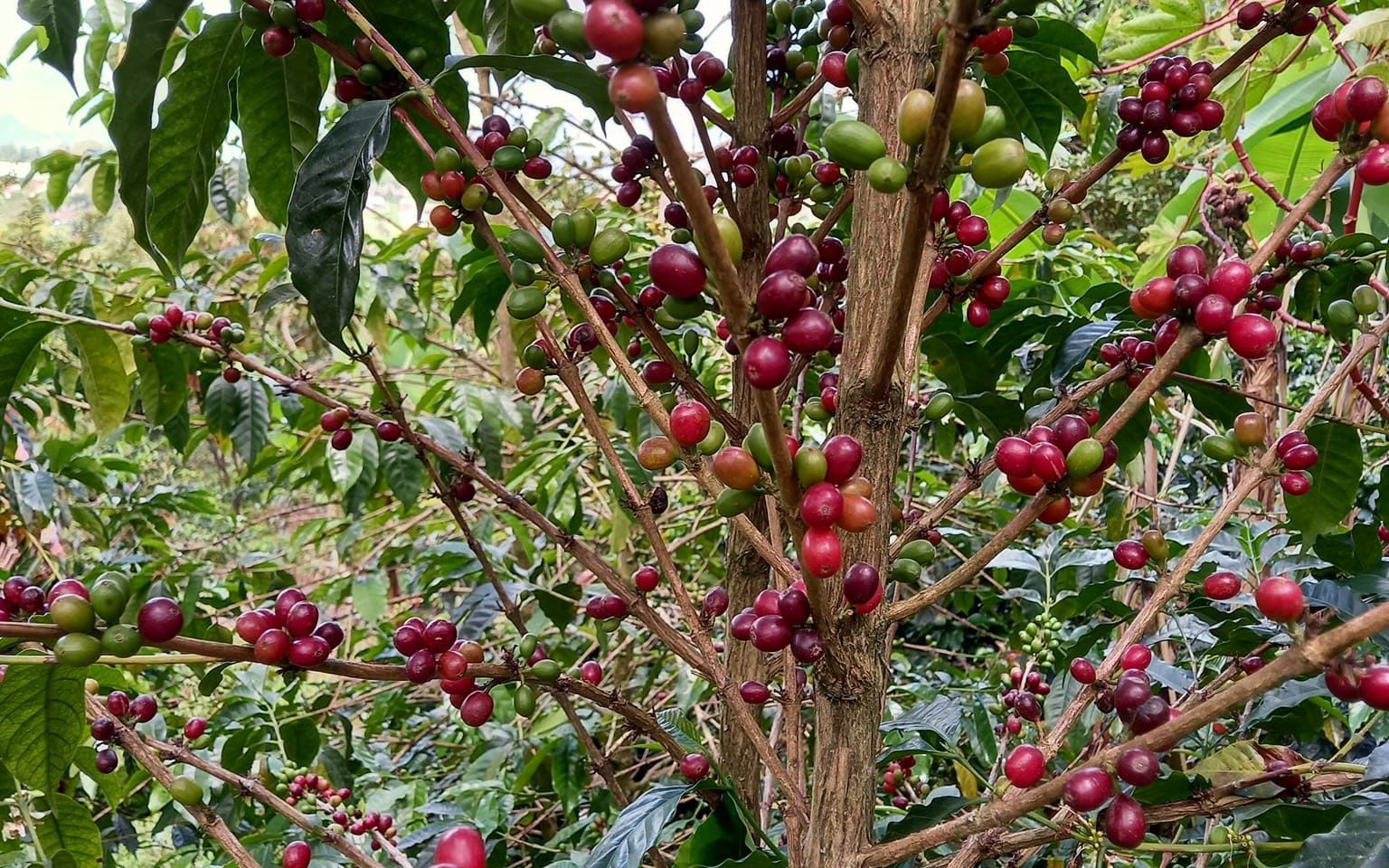
We exited the jardín botánico to the nature reserve Diosa Entre las Aguas where the main operations are located. On the deck of the coffee house, Sebastián and the owner, Jorge, explained their operation’s revolution against monoculture, instead planting individual coffee trees among the other jungle plants where they can thrive in a complete ecosystem.
While this doesn’t produce industrial quantities of coffee, it produces better-tasting coffee that’s better for the environment.
I can certainly attest to the superior quality of La Virgen de Oro’s coffee. They explained to us the entire cultivation process of coffee, including the various types of fermentation and ending with home-ground and home-brewed coffee of the Geisha variety.
Hiking to the Waterfall
After our first cups of coffee, we hiked deeper into the reserve with the cafetal’s four resident dogs: Mocha, Aroma, Cappuccino, and Canela. Sebastián led us up to the Cascada La Peinada waterfall that’s visible from town. Aside from a beautiful natural phenomenon, it cools you down after a morning of hiking.
Coffee With a View
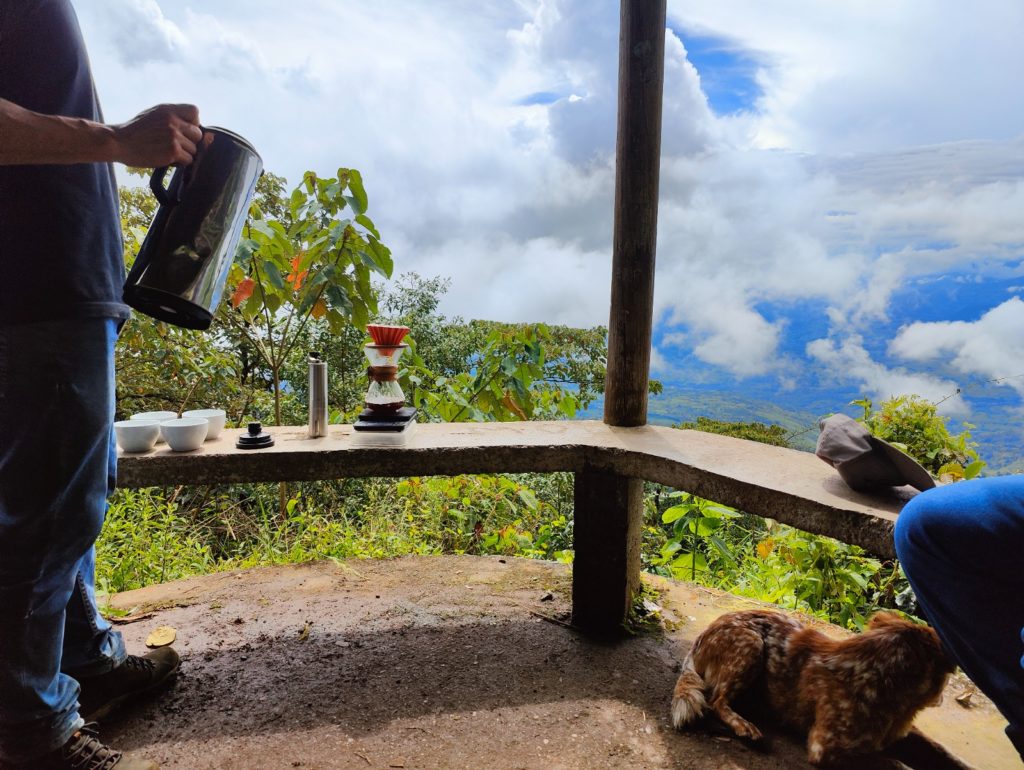
After the hike, it was time for more coffee. We hiked back down to a viewpoint near a sanctuary on the old mountain route between Támesis and Jardín.
We actually ran into a traditional teamster bringing goods to town on muleback, an exciting event for the dogs. With a view of Támesis coming out from the cloud cover, we had more home-brewed coffee while looking for more birds and butterflies.
Finding the Petroglyphs
We took a separate route back down to town. On the route, Sebastián led us to various petroglyphs, carvings by the pre-Columbian indigenous inhabitants of the area, that are present on large rocks in the reserve.
Unfortunately, they’re difficult to see in the daytime, but Sebastián still pointed them out and explained their significance.
Stocking Up on Coffee
Once we got back to Támesis, Sebastián took us to Frutos, a store for local products that sells La Virgen de Oro coffee beans. I bought as much as would fit in my suitcase, especially of the Geisha variety, my top recommendation.
How to Arrange an Experience at La Virgen de Oro
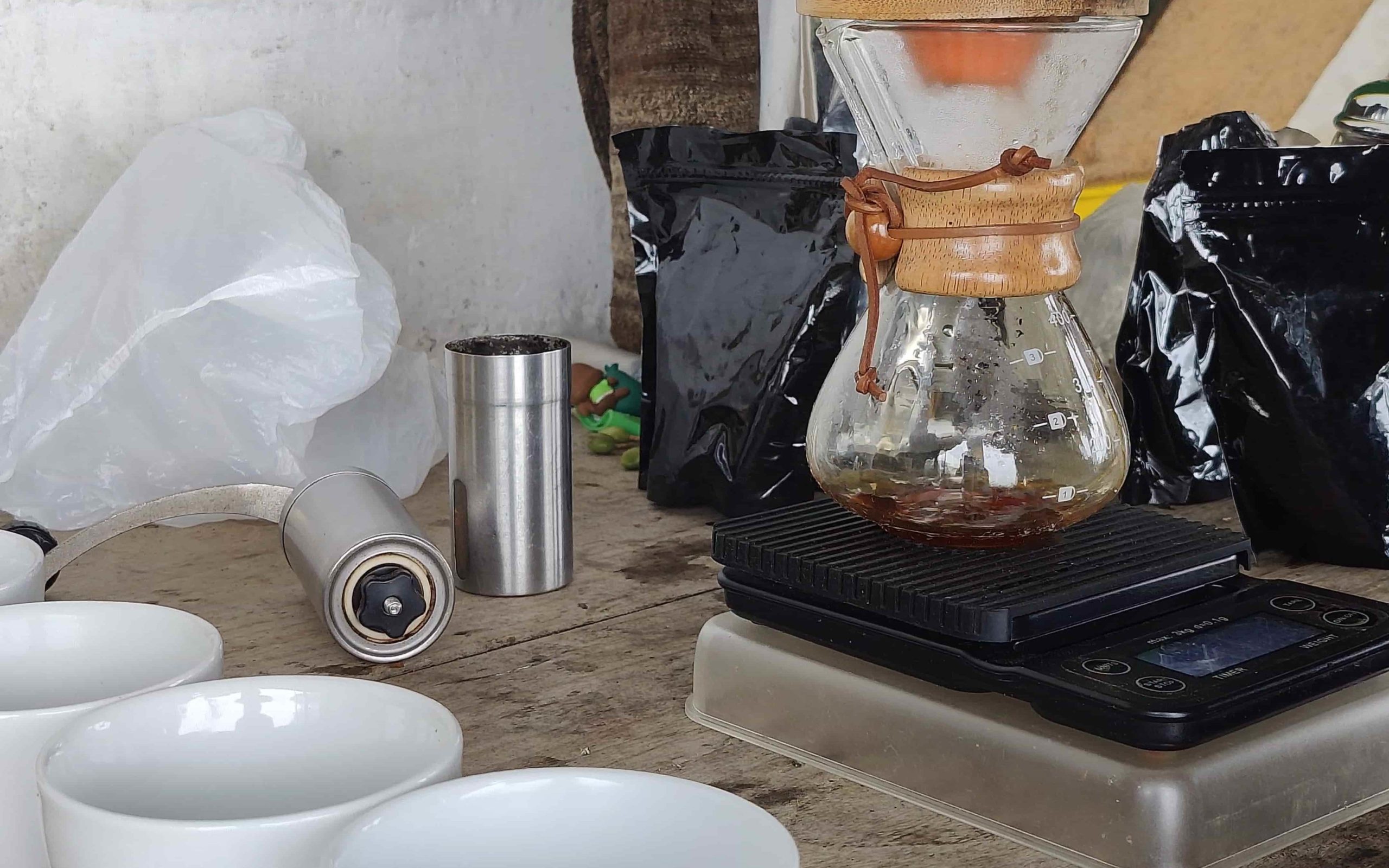
La Virgen de Oro is a very small operation. Arranging an experience with them is pretty informal, which means it’s also pretty flexible.
If you want to see more coffee trees, you can do that. Looking to find more birds? No problem.
Your best bet is to write them on WhatsApp, or you can try calling. You can check their social media for their current phone number:
- Facebook: facebook.com/lavirgendeoro
- Instagram: instagram.com/lavirgendeorocafe
- Email: virgenorocafe.jmc@gmail.com
How to Get to La Virgen de Oro
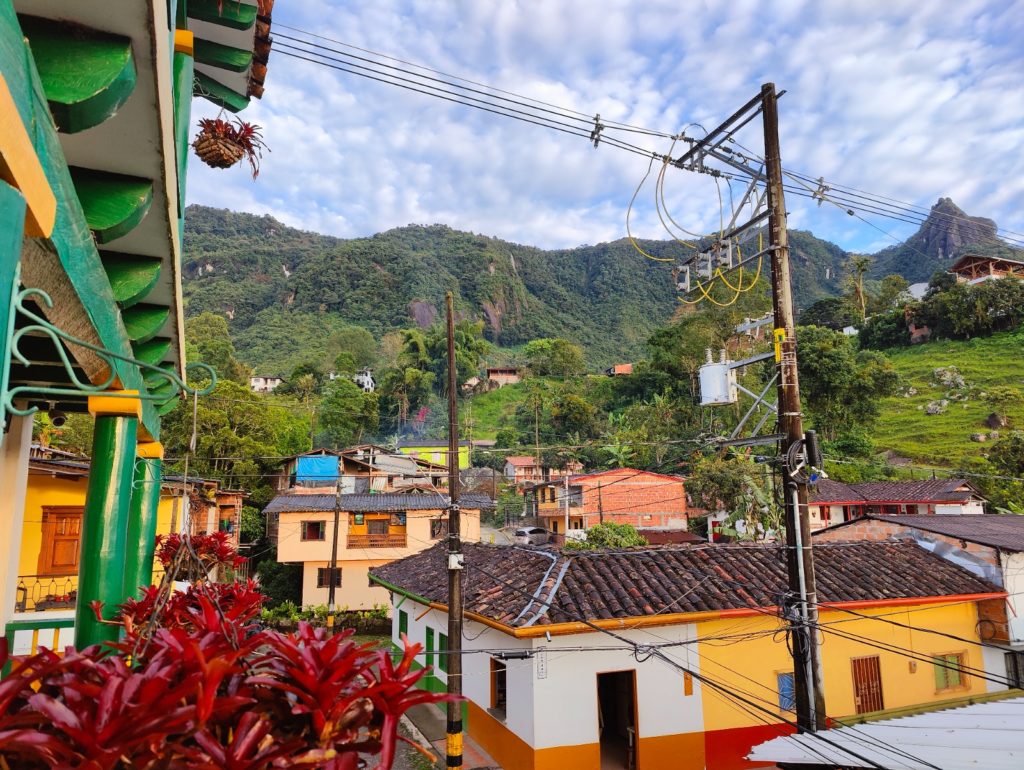
La Virgen de Oro cafetal is located just outside Támesis up the mountain from the jardín botánico. Beware, if you try to search for it on Google Maps, Google will send you to a separate building far away.
Luckily, getting to Támesis itself is not too difficult by car. You head out of Medellín along Highway 60 like you would to go to Jardín or Jericó but then take Highway 25B down the river to La Pintada before heading up the mountain.
You can also take a bus such as those offered by Transportes Támesis or arrange a private driver with your Casacol receptionist. Once in Támesis, I recommend you let Sebastián or whoever your guide is lead you through the reserve to the cafetal.
Where to Stay
La Virgen de Oro makes lodging easy because they know many of the hoteliers in Támesis and can arrange it for you. They also have their own cabin, but it’s deep in the forest and difficult to access. I’d recommend just staying in Támesis and enjoying the rest of the town while you’re there.
For our stay, Sebastián arranged for us to stay at Hotel Vegas Del Rio, a great option because it’s within walking distance of the main square but still puts you to sleep with the sounds of the jungle and the stream running through town.
If you’re staying in Támesis for an extended period of time, you can also find your own accommodations.
Try La Virgen de Oro Experience for Yourself
La Virgen de Oro is definitely a must-see while you’re in Medellin. Sure, it might not be in the city center, but it’s definitely a cool day trip to try out.
Whether you go for the birds or you’re there for the coffee, it’s an experience you won’t regret.
If you like this blog, you might like the Casacol Instagram page to keep up with all the new articles. Anything we need to update or correct? Care to contribute? Email us at blog@casacol.co.

